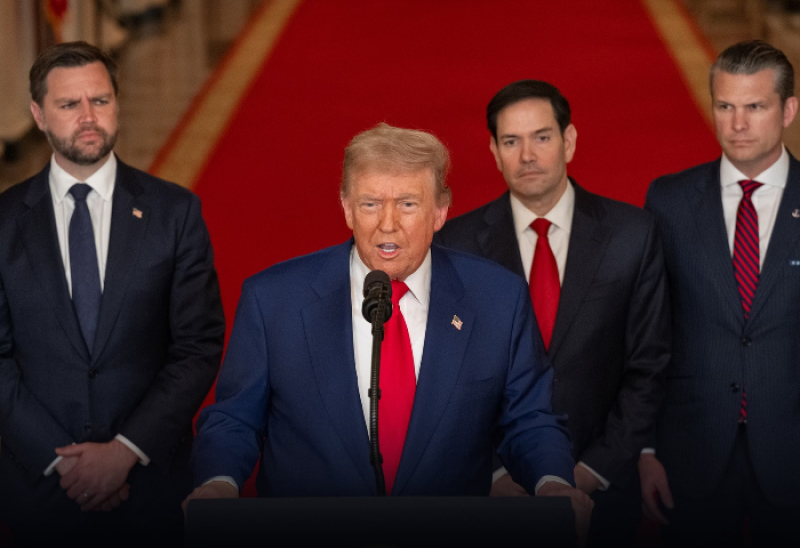
On Saturday, the United States launched coordinated strikes against three Iranian nuclear sites, Trump confirmed the attacks later that evening, stating that American forces had “completely and fully obliterated” Iran’s critical nuclear facilities.
The Pentagon reported that the strikes targeted the Fordo, Natanz, and Isfahan sites. The operation used bunker-buster bombs dropped by B-2 stealth bombers and Tomahawk missiles launched from U.S. submarines, according to The Associated Press.
The Fordo site, which is heavily fortified and buried under a mountain, was among Iran’s most protected nuclear locations. Satellite imagery from Planet Labs indicated that the facility’s entry tunnels were blocked and smoke remained in the air.
Trump described the strikes as a “historic moment,” warning Tehran that “there will either be peace or there will be tragedy for Iran.”
The U.S. Senate is expected to vote soon on a resolution by Sen. Tim Kaine, D-Va., which would require congressional approval before the U.S. declares war or takes further military action against Iran, the AP reported.
The United Nations’ nuclear watchdog, the International Atomic Energy Agency, stated that there were no immediate signs of radioactive contamination at any of the targeted sites. Iran’s Atomic Energy Organization announced that “the country’s nuclear program would continue,” despite the attacks.
Iran’s Foreign Ministry condemned the strikes, calling them “a dangerous war,” and warned that Iran “reserves its right to resist with full force.” Iran’s Foreign Minister Abbas Araqchi, speaking in Istanbul, said, “I’m going to Moscow this afternoon, and I have a meeting with President Putin tomorrow morning. Russia is a friend of Iran,” as reported by Reuters.
In response, Iran’s Revolutionary Guard fired 40 missiles at Israel, including the Khorramshahr-4 missile capable of carrying multiple warheads. One building in Tel Aviv sustained heavy damage, and over 80 people were injured.
The Israeli military quickly destroyed the missile launchers used in the attack and launched retaliatory strikes against military targets in western Iran. Israel also closed its airspace to commercial flights following the American operation.
This U.S. intervention follows nine days of Israeli airstrikes aimed at weakening Iran’s missile defenses and nuclear facilities. U.S. and Israeli officials indicated that Israel’s campaign created a rare opportunity for the U.S. to cripple Iran’s nuclear program effectively.
The Trump administration had previously spent two months engaged in back-channel talks with Tehran in an unsuccessful effort to secure a diplomatic resolution to Iran’s nuclear activities.



















